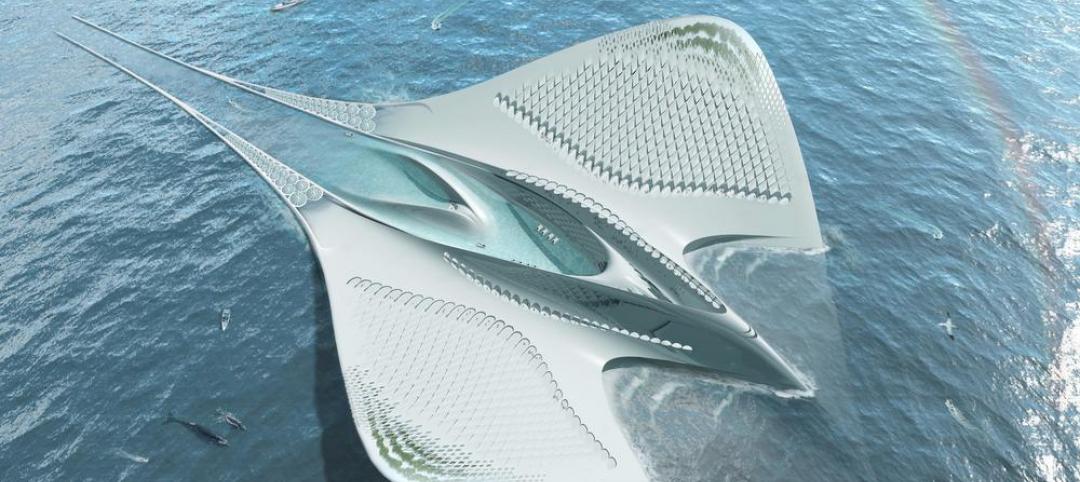Turner Construction Company, the leading general builder in the United States, today announced the results of a new Market Barometer survey that focused on environmentally-sustainable, or “Green,” building, and on sustainable practices in general. Key findings revealed that companies remain committed to constructing Green buildings, but fewer executives said their companies were likely to seek LEED certification when constructing a Green building, citing the cost and difficulty of the LEED certification process.
Brightening outlook for construction projects
Among real estate owners, developers, and corporate owner-occupants, 64% said they expect to undertake new construction projects over the next 12 months (up from 46% in the 2010 survey), and 71% said they expect to undertake renovation projects over the same period (up from 58% in the 2010 survey).
Widespread commitment to sustainable practices
Eighty-four percent of respondents said their companies were committed to environmentally-sustainable practices. Of that percentage, 56% of executives said their companies were extremely or very committed to following environmentally-sustainable practices in their operations, while an additional 33% said they were somewhat committed. In addition to citing financial reasons for this commitment, executives were most likely to cite broader considerations as extremely or very important including belief that it’s the ‘right thing to do,’ (68%), impact on brand/reputation (67%), and customer requirements (61%), along with cost savings (66%).
Reducing energy costs and operating expenses are the key drivers to green construction
Executives were most likely to cite financial factors as being important to their companies’ decisions on whether to incorporate Green features in a construction project. Respondents indicated that energy efficiency (84%) and ongoing operations and maintenance costs (84%) were extremely or very important to their decisions. However, more than two-thirds of executives also said that non-financial factors were extremely or very important including indoor air quality (74%), health and well-being of occupants (74%), and satisfaction of employees/occupants (69%). However, only 37% of executives said it was extremely or very important to their companies to minimize the carbon footprint of their buildings. This suggests that when environmental factors influence the decision to incorporate Green features, these are typically improvements to the indoor environment and its impact on the health and wellbeing of occupants and on the productivity of employees, rather than broader concerns about global environmental impacts. Respondents also indicated that impact on brand/reputation (67%) and employee productivity (67%) were important factors.
A large majority of executives said their companies would incorporate Green features if constructing or renovating a building. Eighty-one percent of executives said their companies would be extremely or very likely to invest in energy efficiency improvements if they were undertaking a construction project, while more than half said they would invest in improved indoor environmental quality (63%), improved water efficiency (57%), and Green materials (53%).
“Energy efficiency figures prominently in the decision-making process of green building primarily because of its large economic impact. Water efficiency in Green construction was seen as less important. This is in spite of a growing awareness that water is a finite resource, both in its operational use and its role in the production of goods and materials. While the direct economic impact of water efficiency is less than the savings on energy, its environmental impact is quite significant,” said Michael Deane, Vice President and Chief Sustainability Officer at Turner Construction.
Fewer companies plan to seek LEED certification
Although the vast majority of companies remain committed to Green buildings, the percentage of executives who thought it was extremely or very likely that their company would seek LEED certification if they constructed a Green building was only 48%, down from 53% in the 2010 survey and 61% in the 2008 survey. Among executives who said their companies were not likely to seek LEED certification, the most important reasons cited were the cost of the certification process (82%), staff time required (79%), time required for the process (75%), and the overall perceived difficulty of the process (74%). It is apparent that in the last four years many companies seem to have become more knowledgeable about the means and methods of designing and constructing Green buildings and are less reliant on LEED as a checklist or a scorecard, as indicated by 52% of executives saying that they prefer to rely on their company’s internal building standards. At the same time, 41% of executives thought it was at least somewhat likely that their companies would consider seeking certification under a rating system other than LEED if they constructed a Green building. Of those executives who indicated they would use another system, 63% said they would be extremely or very likely to consider seeking certification under ENERGY STAR, which again highlights the importance of energy efficiency. It should be noted that some owners may elect to certify under more than one rating system.
“We’ve seen from our own work and the continuing growth of the green building market that in spite of this reduction in enthusiasm for LEED certification, respondents are still building green,” said Deane. “While some respondents are relying on their own standards or are considering another rating system, LEED certification remains the best third party verification of achievement that is recognized by consumers and that can be used to market and promote a property.”
Concerns persist about construction costs and the length of the payback period
When asked what length of payback period would be acceptable when considering Green features, 44% of executives said they would accept five years and almost 80% of executives said they would accept a payback period of five years or longer. Despite the acceptance by most executives of an extended payback period, 61% of executives still felt that the length of the payback period was an extremely or very significant obstacle to the construction of Green buildings while 62% cited higher construction costs. +
Related Stories
Architects | Aug 4, 2015
Frank Lloyd Wright School of Architecture closer to independent incorporation
The school is halfway to its first fundraising milestone, but is facing a major deadline at end of this month.
Industrial Facilities | Aug 3, 2015
Architect Jacques Rougerie envisions floating city to function as roving laboratory
The manta ray-shaped vessel will be completely self-sustaining, run on marine energy, and produce no waste.
Cultural Facilities | Aug 3, 2015
Funding needed for Washington's Desert Storm memorial
The National Desert Storm Memorial Foundation has a $25 million goal for the project.
Sports and Recreational Facilities | Jul 31, 2015
Zaha Hadid responds to Tokyo Olympic Stadium controversy
“Our warning was not heeded that selecting contractors too early in a heated construction market and without sufficient competition would lead to an overly high estimate of the cost of construction,” said Zaha Hadid in a statement.
Architects | Jul 30, 2015
The Lego Architect: Book offers simple how-to steps for recreating iconic buildings with Legos
The book features famous buildings accompanied with a photograph and drawing of the Lego model of the building, and a list of all the Lego pieces needed to complete a model of the building.
Transit Facilities | Jul 30, 2015
Snøhetta designs ring-shaped cable car station in Italian Alps
In Snøhetta’s design, two cylindrical rings embedded into the existing topography, each at different elevations, will be connected by a cable car. During the minute-long cable car journey, passengers can enjoy views of the city and of the Italian Alps.
Office Buildings | Jul 29, 2015
Design plans for Fannie Mae’s new HQ revealed
The developer/owner, Carr Properties, envisions a 1-million-sf plus mixed-use center with a large retail pavilion.
Sports and Recreational Facilities | Jul 29, 2015
Milwaukee Bucks arena deal approved by Wisconsin state assembly
Created by Milwaukee firm Eppstein Uhen Architects and global firm Populous, the venue will be built in downtown Milwaukee. Its design draws inspiration from both Lake Michigan, which borders Milwaukee, and from aspects of basketball, like high-arcing free throws.
Contractors | Jul 29, 2015
Consensus Construction Forecast: Double-digit growth expected for commercial sector in 2015, 2016
Despite the adverse weather conditions that curtailed design and construction activity in the first quarter of the year, the overall construction market has performed extremely well to date, according to AIA's latest Consensus Construction Forecast.
University Buildings | Jul 28, 2015
OMA designs terraced sports center for UK's Brighton College
Designs for what will be the biggest construction project in the school’s 170-year history feature a rectangular building at the edge of the school’s playing field. A running track is planned for the building’s roof, while sports facilities will be kept underneath.

















